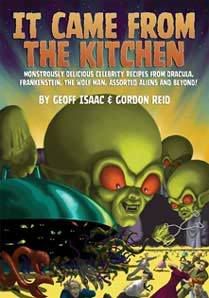In other words, it sounds like just about every well done steak I've ever had.
I think the journalists were a bit obnoxious, and I have to side with Ramsay on this one. Either they have an axe to grind with Ramsay, or they're fishing for more ratings. In any event, a well done steak loses its flavour through cooking.
Typically, well done steaks will be slightly charred on the outside, especially if it's a thick steak that the longer cooking requires. An overcooked steak will be bitter. I'm not sure what rubber tastes like as unlike the reviewer, ever eaten it but I going to assume he's referring to the chewy texture.
However, the USDA minimum safe temperature for cuts of steak are 145F which is around Medium to Medium well done so a well done steak is not necessary for safety reasons. Red meat turns pink at around 140F as the myoglobin -- a protein that stores and carries oxygen to the muscle tissue -- starts to turn colour. It's also that runny red juice that people mistake for blood. It's actually the myoglobin that gives the meat its red colour.
Some tips for cooking steak:
- Don't go by weight when cooking meat. Use the thickness as a measure instead. A one inch thick steak will cook on medium heat for 4 minutes a side for rare, 5-6 for medium and around 7 for well done.
- Only turn steaks once especially if using a BBQ. If turned too early, the outer layer can stick to the grill and you want to get those great lines on the steak.
- Meat is mostly water and they give it up through the cooking process. Let the meat rest for about 10 minutes so it can reabsorb the water and you'll end up with a more tender steak.
- When taking temperatures, use the center of the meat away from the bone (the bone can heat up more than the meat and give an inaccurate temperature reading) and slowly pull out the thermometer reading the temperature the entire time. The lowest temperature will be the most accurate.
- Ground meat should be cooked to 155F at least. There is greater danger for pathogens and fecal bacteria from the intestines in the butchering process with ground cuts of meat.
- Chefs often fry their steaks in butter with a bit of olive oil and keep basting through the cooking process. Tilt the pan slightly towards you and with a soup spoon, keep pouring the butter over the top. This will result in a juicier steak even at medium.



